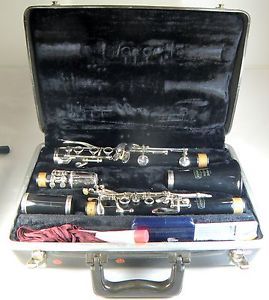Selmer Bass Clarinet Serial Number Chart

Proxima nova font free download dafont. How Old is My. (the place to go to determine how old your instrument is).
El Camino Real (The Royal Road or The King's Highway) was commissioned by the 581st Air Force Band and its commander, Lt. This fantasy is based on a series of Spanish folk melodies and underscored by chord progressions used by generations of flamenco guitarists, whose fiery style and brilliant playing have created a vast body of what many consider authentic Spanish music. The music follows a traditional fast-slow-fast pattern, with a first section that is based on the dance form known as the jota, and second contrasting section derived from the fandango.
When was your Selmer Paris Saxophone made? This is the most accurate Selmer Serial Number Chart on the internet!
Friend of GetASax.com Douglas Pipher has been given unprecedented access to the Selmer Paris archives, and after thousands of hours of research has compiled a brand new and more Selmer Serial Number Chart for Selmer saxophones. With permission, we have printed the results of his research below.
If you are wanting to sell your Selmer saxophone, we are always buying vintage saxophones. Please contact us at Selmer Serial Numbers – a Fresh Approach Douglas Pipher, June 20, 2017 The existing Selmer Serial Number Chart has been available on the internet for years. Many saxophonists use it as the authority for determining when an instrument was made. But there are problems with the existing chart, such as the timing of the introduction of the different models. It seems unlikely that every new model was introduced exactly at the beginning of a new year. It also seems unlikely that each year’s production ended at a conveniently round number. Was the chart built from specific data or was it just someone’s estimate; a guess which eventually became assumed to be an absolute truth?
With these questions in mind, the need for a fresh look became clear, to see if there was a way to measure the accuracy, or inaccuracy, of the existing chart. Douglas Pipher decided to take on the challenge. Clearly the first step was to collect as much primary data as possible. It is well known that Selmer Paris possesses some archival records but they are not available to the public. With a background in statistical analysis and an established record in the study of Selmer history, Douglas was able to secure access to these archives.
Once there, the daunting nature of the task became apparent. The archives are comprised of a series of very old and fragile notebooks, written by a variety of people, in a variety of handwriting styles. Some were neat and detailed and others were nearly illegible and of course, it is all written in French. But, the fact that all the data still existed was like finding a treasure. The archive records contain four key elements: – Instrument type (Alto, Tenor etc) – Finish and custom features – Shipping date – Destination In most cases, there was no mention of what model was being produced.
The data started at serial #5000 and continued for over 75 years. Whether earlier notebooks were lost or were never kept is unfortunately unknown. The first phase of the research was to study the records from the beginning up to the end of the Mark VI era. (1927 to 1975) After several trips to Paris and several thousand hours of research and study, the original shipping data was collected and organized. Finally, it was possible to do a detailed study of each year’s actual sales and compare them the to the information suggested in the existing serial number chart.
Let’s take a look at 1927, the earliest year for which full data was available. The existing serial number chart showed a range from 5601 to 7850. By simple subtraction, 2249 saxophones were allegedly built in 1927. A search of the actual shipping dates for this serial number range revealed the following: Only 1537 saxophones within this range were shipped in 1927.
An additional 404 were shipped in 1928 and 27 more were shipped even later than that. Dividing the actual number (1537) by the alleged number (2249) revealed that the serial number range for 1927 was only 68% correct. Clearly, there was room for improvement. This process was repeated for each year up to 1975. The average accuracy for the entire existing serial number chart was a disappointing 66%. That’s only two out of three!
So about a third of the people using the list got the wrong year for their saxophone. It quickly became obvious that an improved chart was needed. Fortunately, the primary shipping data could now be used to rebuild the serial number chart from scratch.
Beginning with a list of all the actual 1927 sales, they were sorted by serial number. Next, they were grouped into serial number ranges of 100.

(5000 – 5099, 5100 – 5199 etc) and the total number of 1927 sales within each group was calculated. The chart at left shows that less than one quarter of the saxes in the 5000 to 5299 serial number range were sold in 1927. Most were sold in 1926. The range from 7300 to 7800 also showed less than half of the sales in 1927, with most of the remainder being sold in 1928. Download naruto vs pain full fight samehadaku.